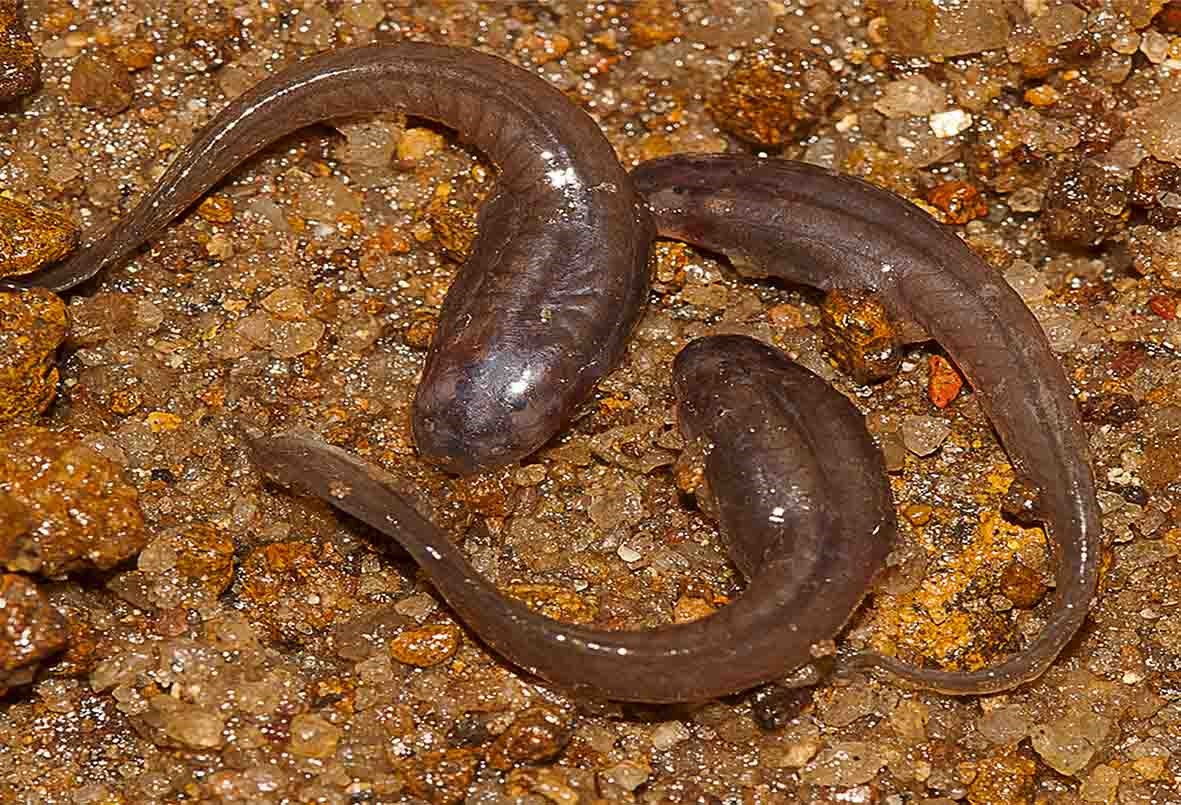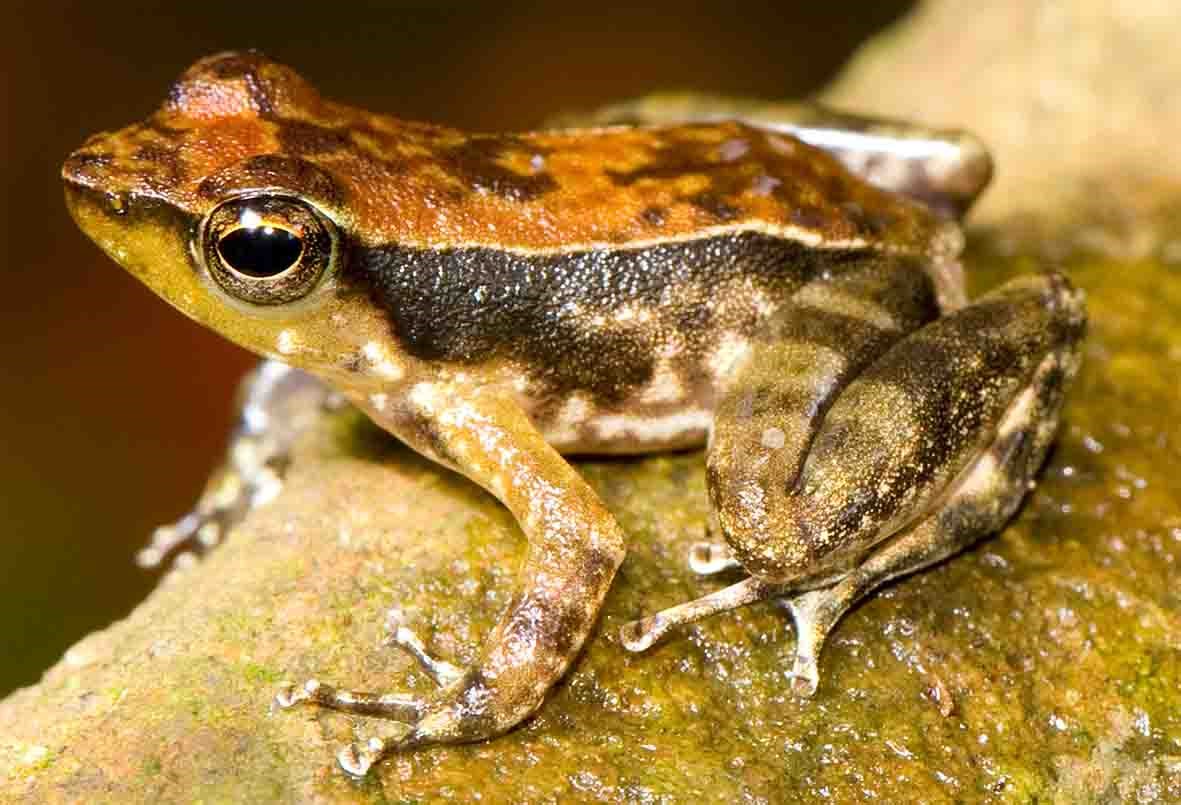Elusive 'Dancing Frog' Tadpoles Finally Glimpsed

Elusive tadpoles of the Indian dancing frog, known for its leg-waving dance moves, have been seen for the first time ever.
Though scientists had known about the adult frogs' graceful "dances," which lure mates and ward off rival males, the juveniles of the species had never been seen before. That's likely because during this developmental stage, the tadpoles live entirely below the streambed surface, buried deeply in the silt and gravel. They make their burrows in the forest rivers of the Western Ghats mountain range, along India's west coast.
Sathyabhama Das Biju, one of the study authors and a biologist at the University of Delhi in India, said in a statement that the tadpole likely stayed hidden to science for so long because of such burrowing habits, which are highly unusual in tadpoles. [Dry Tadpoles? Indian Dancing Frog-Babies Live In Sand]

Buried alive
The Indian dancing frog tadpoles are well-equipped for spending this stage of their life cycle tunneling through wet sand and gravel in total darkness, the scientists found. A number of unusual features help the wee ones navigate and survive underground until they're ready to emerge as froglets, the researchers discovered.
Genetic testing determined that the tadpoles belonged to the dancing frog species Micrixalus herrei. The researchers noted that a layer of skin covered the tadpoles' eyes, likely to protect them from abrasions. The tadpoles' flat, eel-like bodies and powerful, muscular tails were just right for wriggling through silt and mud. When the scientists examined the tadpoles' heads, they found that the animals had no teeth, though their jaws were sheathed with a serrated, gatelike structure that may act as a filter, keeping out large sand grains, the researchers said.
These tadpoles also sport ribs — which are present in only four other frog families — even at an early stage of their development. The scientists suggested that ribs might help the tadpoles undulate through sand by providing more of a framework for muscular attachment, and could serve as protection for the animals' internal organs.
Sign up for the Live Science daily newsletter now
Get the world’s most fascinating discoveries delivered straight to your inbox.
The contents of the tadpoles' guts revealed that the animals fed by vacuuming up bits of sediment and decaying organic matter, which they digested with the help of another unusual adaptation: tiny spherical bags in their guts holding calcium carbonate (or limestone). Even juvenile dancing frogs had these "lime sacs," the scientists reported, which are not commonly seen in frogs.
Scientists' knowledge of dancing-frog diversity has expanded rapidly in recent years, from 11 known species in 2006 to 24 species described by 2014. The discovery of these formerly hidden tadpoles lays new groundwork for future studies of this frog lineage, the researchers said in a report of their findings published online March 30 in the journal PLOS ONE. The finding will also improve researchers' understanding of the unique adaptations that enable the tadpoles to grow and develop as juveniles underground, the scientists said.
Another peculiar Indian frog, the purple frog (Nasikabatrachus sahyadrensis), is also equipped with features that let it spend most of its life digging underground. Recent research showed that as the tadpoles of this species grow into froglets, they develop strong digging arms and a spade-shaped skull made for burrowing.
Follow Mindy Weisberger on Twitter and Google+. Follow us @livescience, Facebook & Google+. Original article on Live Science.

Mindy Weisberger is an editor at Scholastic and a former Live Science channel editor and senior writer. She has reported on general science, covering climate change, paleontology, biology and space. Mindy studied film at Columbia University; prior to Live Science she produced, wrote and directed media for the American Museum of Natural History in New York City. Her videos about dinosaurs, astrophysics, biodiversity and evolution appear in museums and science centers worldwide, earning awards such as the CINE Golden Eagle and the Communicator Award of Excellence. Her writing has also appeared in Scientific American, The Washington Post and How It Works Magazine. Her book "Rise of the Zombie Bugs: The Surprising Science of Parasitic Mind Control" will be published in spring 2025 by Johns Hopkins University Press.










